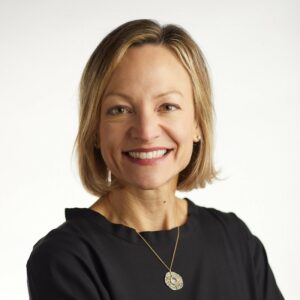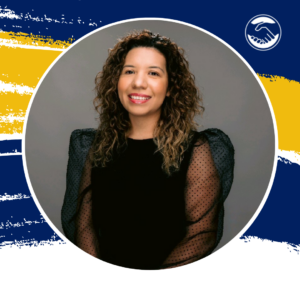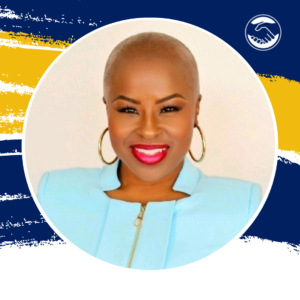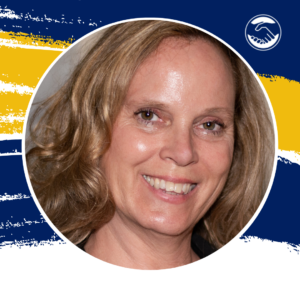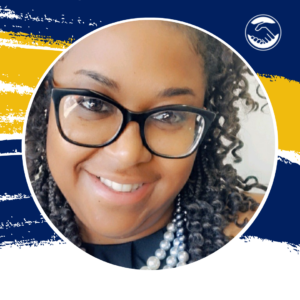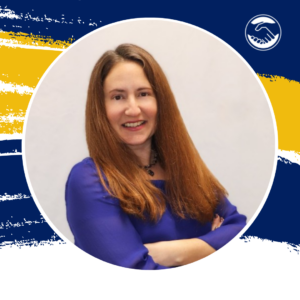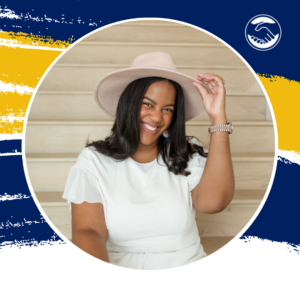Member Spotlight: Jill Angelo: Part 1
Co-founder and CEO, Gennev
Company Website: Gennev.com
Jill Angelo is the co-founder and CEO of Gennev, the first-ever online clinic for women in menopause. Gennev offers menopause telehealth doctors, health coaches, products, and education to serve its target market. Recently, Founders First co-founder Kim Folsom caught up with Jill and discussed the company’s progress since they first worked together back in 2017. Among other topics, they covered Jill’s efforts to seek the right kind of funding and achieve profitability and sustainability for her business. This is Part 1 of their conversation.
Jill, how have things gone since we last talked?
Things have continued to change, Kim! Our business really fundamentally leaned into the need for access to quality healthcare during the pandemic, and you know, like so many businesses, we prepared for the worst and really invested in what people needed. We’re providing post-reproductive healthcare services for women—age 40 to 65 is kind of our target audience. As we came through the pandemic, we really invested in building out our telemedicine infrastructure and, as a result, we are now serving patients in 49 of the 50 states.
Wow, I remember in 2017 you had a vision for where you wanted to go. This is so great.
Yeah, we started with physical over-the-counter products for symptom relief and added education and community. We just listened to our customers who said, “I don’t feel heard. My doctor is treating me for sleep and depression problems when I know there’s something else going on.” And it’s menopause and it’s common. Every woman gets to go through it and so many women struggle because our healthcare system isn’t really set up to support them.
So we’ve built out a team of OB-GYN and health coaches. Our approach is multidisciplinary, so we’re an integrated care platform that really provides women with access to a multidisciplinary team that treats the whole woman, whether it’s medical support and prescription guidance or lifestyle change with health coaches around nutrition and sleep and exercise and supplements. We can serve the whole person and we’re proud of that, and we also believe that is the model for healthcare of the future. As a result, 94% of our patients report an improvement in their symptoms and that sets us up for the next phase of this business.
That’s fantastic. I remember when your first round of funding closed, and even before then, when tracking the data and using it to continually improve was always key. It’s amazing to see how it’s gone from then to now.
You know, it’s fascinating. Running a data-first business is so fulfilling because you see the signals right away, and it gives you a source of competent decisions that you make. We have what we call our infamous menopause assessment. We still see hundreds of women taking that assessment every day, and what it does is it tells a woman: Am I in menopause and, if so, where am I in this journey? Like how long is it going to take?
And that we use that data not only to make our care model more efficient in how we support her, but then our vision for where we’ll take that data is really into digital diagnostics, where we’re able to serve larger masses of patients in self-help ways and even provide some sort of predictive guidance and information for her relative to longitudinally tracking, you know, what’s happening now and how does menopause impact long-term health problems related to heart disease or post-osteoporosis, or even in dementia. So, the data continues to be really core to what we do.
Wow, that’s fantastic. So, how has your actual business and revenue model changed from early on? I know you were going to do something with the community. How have you manifested your telehealth revenue model?
We really have two core revenue streams: We have products, and we have services. And when we started, we were products predominantly, and now services have taken off and that’s really our core focus, because if you have a relationship with the patient, then the stickiness is like ten times that of just a product-based relationship.
The products are still very, very important on services around the revenue options for that particular patient. But when you think about our services, we have a two-pronged service revenue model. We have by appointment, just like scheduling an appointment, and then we also have a recurring membership for women who want to work also with a health coach, predominantly because that relationship requires multiple touches and we don’t want to limit that. Whatever it takes for that patient to feel better, we’re going to support her and that’s what a membership model allows.
I think I took one of the assessments early on, when you were starting to do those. So, if I were to choose, like the subscription model, do you share back my data to help me kind of set expectations of what my menopause journey would be?
Yes. We do. I think that’s the number one thing and that’s the most immediate kind of gratification or support that the woman feels or experiences. As soon as she’s done with that assessment, she is provided a dashboard that shows her what her menopause type is–one through five–and that plots her on this 20-year journey map that we have aligned with various symptoms and phases so she can see where she’s at. It also kind of helps her understand why she is experiencing what she’s experiencing. And then, over time, as we build out our technology platform, she can track that data and her progress on that roadmap over time.
So we’ve always been an education-first company. We want to educate women on something that we never got educated on. We don’t talk about menopause at any time in our progression as young girls or women. And this menopause assessment is kind of a real self-help tool that informs every person on their own personal experience and what they’re in and what they can expect.
Well, at the conclusion of this, I’m going to sign back up! As you were going through your journey, I know we were both commiserating that there’s just such a gap there. Continuing on, let’s talk about how your company has developed since we worked together in 2017. How has your team developed since the last time we talked? You added a new CTO?
Since then, I think we’ve even changed out our CTO as we continue to find and figure out what kind of skill sets we need. As we see such a gap in the market with data and the analysis of that data for this very large audience, our CTO now is a true data scientist. He has been my technical advisor for a couple years and formally joined the team in January of this year. You know, he’s a Ph.D. in biomedical engineering and data scientist with rich and deep early experience at Amazon and Microsoft. So he brings not only science and real depth of science and analysis to what we’re doing but also real rigor that enables us to attract and grow our technical talent over time.
Continued in Part 2.
Interested in an accelerator program at Founders First? Check them out!
- Founders First CDC - Small business secrets of navigating capital stack for growth

